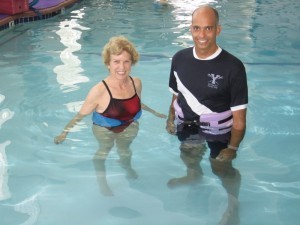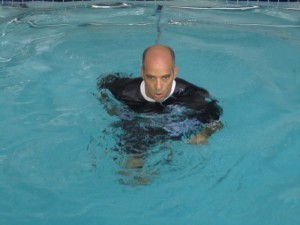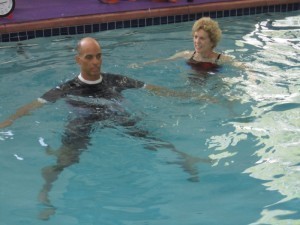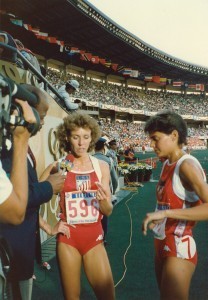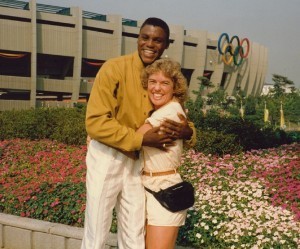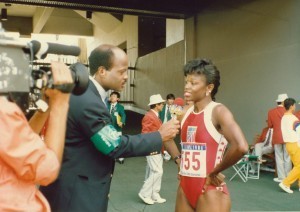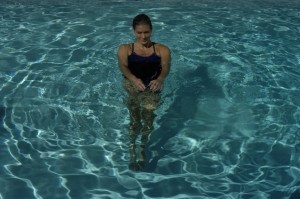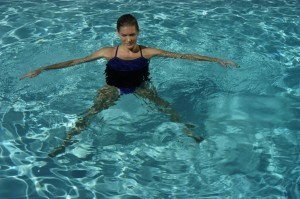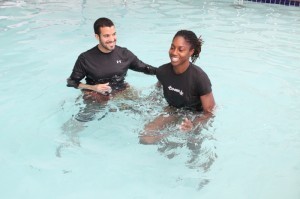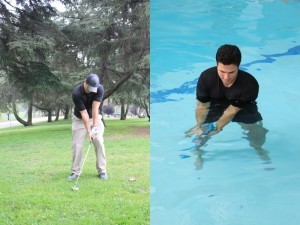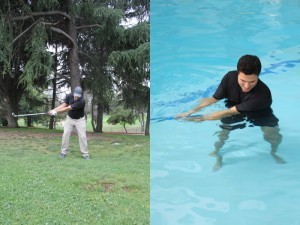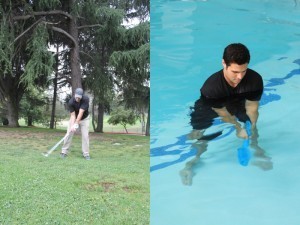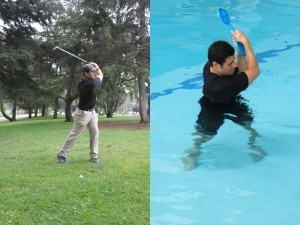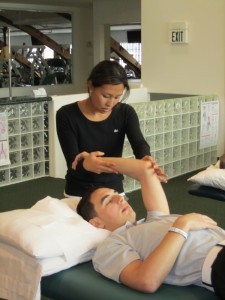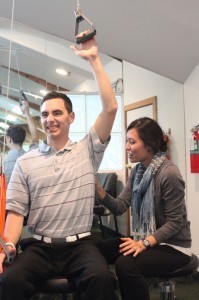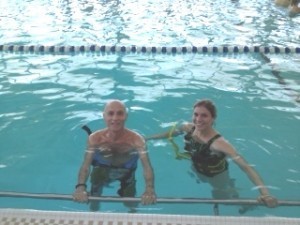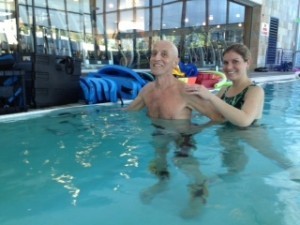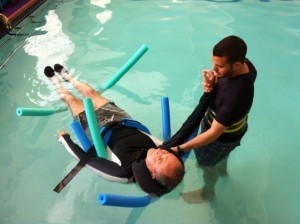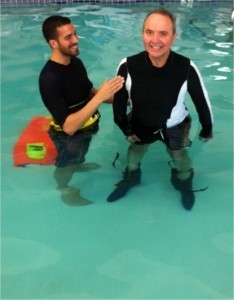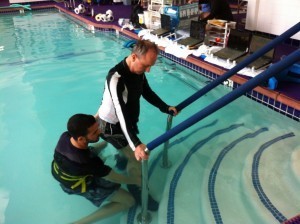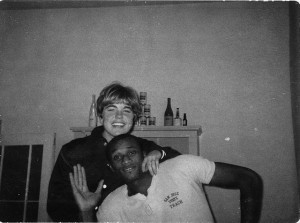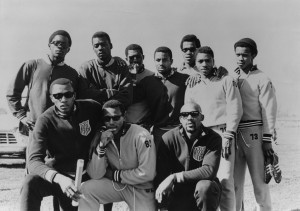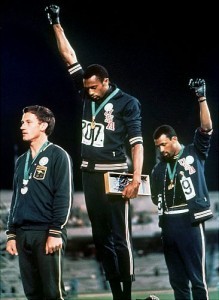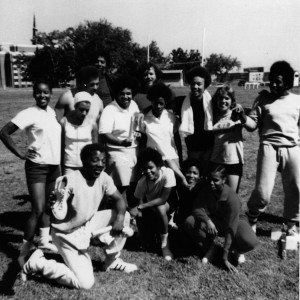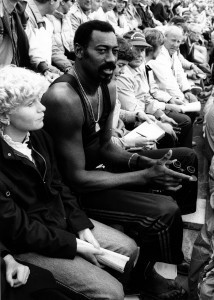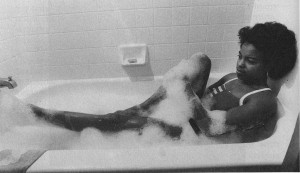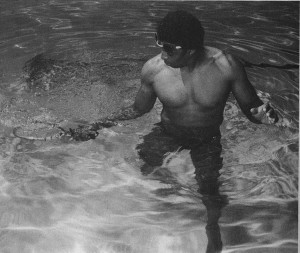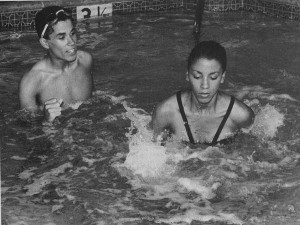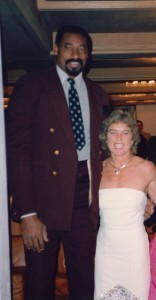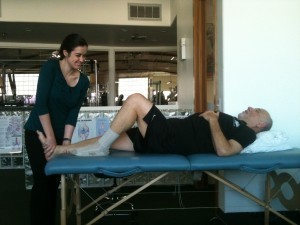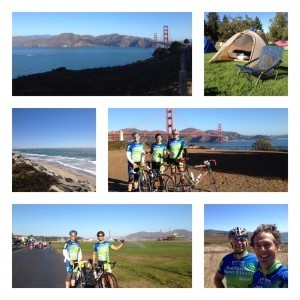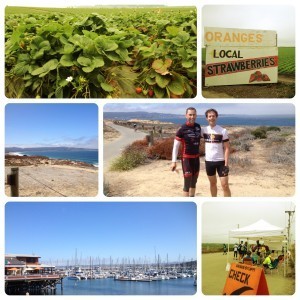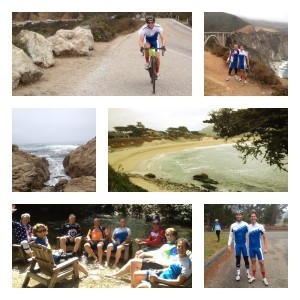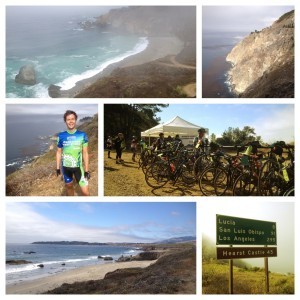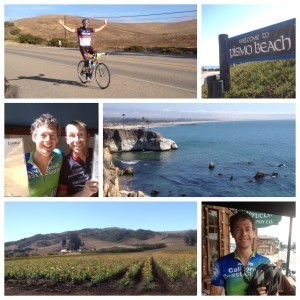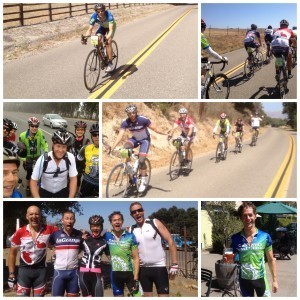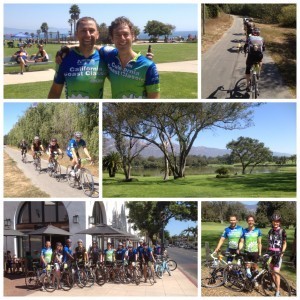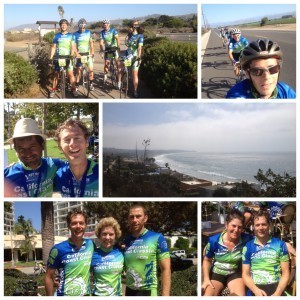Lynda Huey's Blog, page 5
August 20, 2013
The Early Years with Wilt Chamberlain
This is 2013. Wilt would have LOVED this year – he loved all things 13. Today is his birthday and it’s time once again to honor Wilt and tell more stories of the twenty-eight years I hung out with him.
From the time I met Wilt Chamberlain in 1971 until his death in 1999, he was the central reference point in my life. I loved him; I was annoyed by him. I did things for him; I did things in spite of him – no matter how I said it, my life revolved around Wilt. It didn’t matter what other loving men I met, they never seemed important enough for me to give up Wilt. Well, at least not for good. Twice I swore I’d never see him again. Once it lasted a year. Another time it lasted two years. But then we would somehow cross paths and feel so comfortable with each other again that there we were again.
Our sports lives ran parallel through the beach volleyball and track worlds while our relationship meandered through every possible twist and turn. He was my “family.” For nearly three decades, I often felt as though I were married to a bachelor.
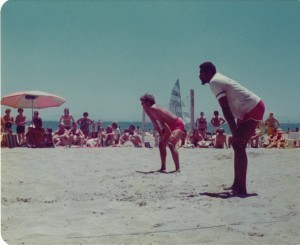
Wilt often played with partner Bob Vogelsang. This time at Cowell’s Beach, Santa Cruz
He came to San Jose for a track meet and stayed at my place. The make-shift bed kept his foot from hanging off the end.
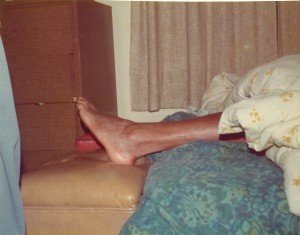
“At least you got my good foot,” Wilt said. He had a monstrous bunion on his right foot.
Wilt hated official holidays. It was darn-near impossible to get him to commit to doing anything on a day others were celebrating a holiday.
“Want to drive up to Santa Barbara for the long week-end?” I would ask.
He would grunt. “Be on the road with a million other people? You can do it.”
But as much as he avoided the so-called “real” holidays, he loved making his own. How about a Bel Air film festival at his place? Everyone bring their favorite film (on VHS in those days) and we watched one after another for two days. Since Wilt didn’t sleep much, he was always looking for something to do during those hours that others did sleep (count me in that group). Someone would always take the bait and stay awake all night watching movies with him while he dozed a few hours here and there.
Thanksgiving was about the only holiday he really liked. The first year that my then-roommate Patty Van Wolvelaere and I had Turkey Day with Wilt, it turned into a three-day feast. Wiltie was a great cook, especially meats, so it was his chance to show off for both of us. Ham the first day, steak the next, and by the time Thanksgiving rolled around we’d gotten in shape for eating big meals and were ready to devour the turkey. But while it was cooking, we created an annual sporting event. We decided to time ourselves running up the steep driveway that was a little more than a quarter of a mile from Mulholland Drive to the flat opening outside Wilt’s gate. I went first since I knew I was going to be slowest. Let them clip time off the goal I set. It was a grueling, tough pseudo-sprint for me, because I never raced anything longer than 200M. Patty, the American record-holder in the hurdlers, knocked ten seconds off my time, then Wilt powered up the hill as if he were used to doing it. No doubt he was since he would run his dogs in the neighborhood. Champion was Wiltie. And every year the champion was Wiltie.
He didn’t like people giving him a lot of attention on his birthday, so he often told people it was a different day. The first year I knew him, he told me his birthday was the 18th, not the 21st. For years I thought his birthday was August 18th before I heard it on the radio to set me straight.
The Olympic Track & Field Trials are often held in Eugene, Oregon. Wilt and I went to them several times together. The first time I got press credentials for both of us from Sport magazine. They ran my article under the title, “The World’s Tallest Reporter.”
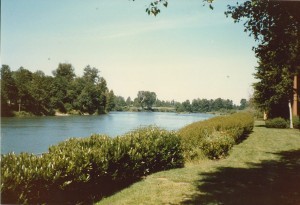
View from our suite at the Valley River Inn, Eugene, Oregon
We enjoyed the shade in the press box and someone delivering results to us on sheets of paper immediately after each race. After the morning heats and quarter-final races there was a long lunch break. Wilt and I both needed powerful workouts, so I took him to the racquetball courts behind the stadium. I’d brought two racquets and a ball and watched him wrestle with the confines of that narrow court. At first he couldn’t hit anything. It was as if he were swatting at flies and missing. I’d never been able to out-do him at anything, so this was BIG fun for me. I even ducked between his legs to make one play and that totally infuriated him. Then he got off a few good shots and that encouraged him. He liked the great sweat we could get quickly on the court and stuck with this new game.
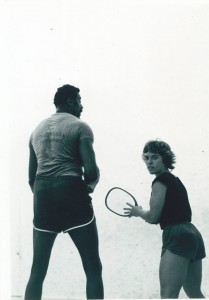
Wilt Chamberlain and Lynda Huey play racquetball
The second day on the courts I knew he was already hooked on what would be his new sport. So I didn’t take it easy on him anymore. I’d been playing for two years by then and had played with Washington Redskins players Frank Grant and George Starke. Both were agile, fast, and had some great shots. They usually beat me, but I certainly improved my game playing them and won just often enough to get some laughs. With Wilt, I started hitting kills shots that he clearly admired. I’d seldom been the recipient of compliments from this ruff, tough guy, but here they were coming left and right. I beat him 21-Zip making sure not to laugh, even though it was funny to me. He bounced right back again.
“Serve it up,” he demanded. He wanted a chance for a come-back.
We played every day for the eight days of the Trials and Wilt was starting to get the game. I could no longer get the ball over his head and I couldn’t go down his backhand wall with my shot, because he’d change hands and hit the ball left-handed with a forehand shot. He was starting to chuckle and smile. The only shot that would guarantee a point was a kill shot low on the front wall. His knees didn’t bend well quickly enough to get him down there. So that became my go-to shot when I needed a point.
In three months, Sport magazine published my brief article, which was mostly about me teaching Wilt to play racquetball. Wilt had retired from the NBA only a few years before and sports fans were still so mesmerized by Wilt that I knew he would be a more interesting story to the magazine than almost anything else I could have written. I mentioned my 21-0 win and Wilt absolutely howled with denial.
“You didn’t skunk me! You know you never beat me that bad!” But I had been there. I knew I had. If I’d had better discretion when I was 29, I would not have embarrassed him by gloating like that. But he got over it. He went to Hawaii every winter and played at the Central YMCA for hours. When he came back every Spring he was incredibly better. By the third year, I could barely play with him. By the fourth year, he had to play me left-handed for me to stay in the game.

Portofino
Tomorrow I’m off to Nice, Cannes, Portofino, and Paris in that order. It’s a trip that Wilt would have loved to take with me and my friend Cinde. Cinde didn’t come with us when we rented Villa di Nave on the Amalfi Coast in 1993, so twenty years later she and I are bringing a photo of the three of us on this trip to Villa Ucelli in Portofino. Wilt was a great world traveler, and he and I took many international trips together. We both moved fast and thought fast, and that was the only way he could have a traveling companion. Wilt will be everywhere as we travel. As we rise up the escalators in an airport, I’ll remember hearing two normally tall Italian men watch Wilt rising higher and higher as he got to the top where they were standing. “Attenzione! Attenzione! Mama Mia! Mama Mia!” Then they had nothing more they could say. Their jaws had dropped and they simply stared as we walked past.
He was definitely larger than life in so many ways.
Happy Birthday, Wiltie!
Lynda Huey, M.S., founder of CompletePT and Huey’s Athletic Network, is a former athlete and coach whose own injuries led her into the water to find fitness and healing. She was educated at San Jose State University where she starred on the track and field team during its golden years. Lynda is the author of four books on water exercise and water rehabilitation.
August 9, 2013
Bill Funderburk Rows Henley Regatta After Hip Surgery

“I wouldn’t have qualified for Henley Regatta without the book Heal Your Hips and the pool therapy I received at CompletePT.”
From 1980 to 1983, Bill Funderburk rowed for Yale in the heavyweight crew boat. The first seat closest to the coxswain is called “Stroke,” and it was Bill’s job in his junior year to hold that first position in one of the varsity boats and establish the rhythm of the rowers. Every year, the Yale-Harvard race was the annual highlight. If the crews won there and had completed a stellar season, Yale funded a trip to row in the Henley Royal Regatta, the most prestigious place in the world for rowing just as Wimbledon is that place for tennis. Film goers were introduced to that world of privileged exclusivity in “The Social Network.” Bill and each of his teammates participated at least once in that illustrious race on the Thames, 30 miles from London.
Bill had a torn labrum in the hip and the joint was bone on bone. He was plagued with back pain and dysfunction associated with the hip, and it was painful to sleep, bend or sit. In mid-December, 2012, Bill had total hip surgery. Then, after non-stop support from his wife Felicia, he came to CompletePT in early January to begin his comeback. His goal was to meet a qualifying standard time for 1000 meters on a rowing machine ergometer by May 1st so that he could return this July with his Class of ’83 Yale teammates in a masters race at Henley.
Bill did twenty pool sessions with us. A large, muscular athlete, Bill needed to wear two flotation belts in order to be upright in the pool without his chin touching the water. His therapist strapped a CompletePT belt on him, the most buoyant of the belts and also added a second belt to counteract the downward pull of his muscle density. He did deep-water running and powerwalking for aerobic fitness in our 7-feet deep pool. At 6’4″, he needed our newly-remodeled pool — he would have been dragging his feet on the bottom of the old one that was only 6′ deep. Then he stretched, using our double bar system that protected him from violating his total hip surgery precautions regarding movement. Next he did some kicking exercises to strengthen core and leg muscles. In shallow water, a flotation cuff was put around his ankle to help increase the range of motion of that post-surgical hip as he did standing leg exercises. Our licensed physical therapists will determine when it is time to switch to adding resistance pieces around the ankles to increase strength.
During the pool therapy, he regained much of his strength and mobility. On May 1st, he beat the qualifying standard by four seconds and earned his seat in the boat!
Bill rowed out of the iconic Long Beach Rowing Association and received support to get actual meters on the water, something crucial to regaining a sense of balance and being able to blend with his Yale class teammates during the week of training prior to the race. But his hip grew stiff from having stopped his physical therapy. Bill returned to CompletePT for the next phase of his rehabilitation. He sensed he would need to fight for the remaining range of motion and athletic capability that was still not quite available to him. He trained hard both in the pool and on the water with LBRA and joined his 1983 Yale teammates in Henley for the race on July 13th.
“The race is so much more than just about rowing,” said Bill. “It’s clearly as much of a mind and spirit journey as it is a physical journey. It’s not about me but every one of the guys in my boat. I had to learn to surrender to and trust my teammates, and they had to do the same. Every second you’re rowing with seven other people, you have to be synchronized with them, be part of something greater than being an individual. That was what I yearned to relive and I knew that’s what all eight of us were going to get to relive.”
There was a time between 1977 and 1984 when Yale had a dynasty in the collegiate heavyweight rowing world. Undefeated seasons were the norm and the expectation not the exception. All of Bill’s teammates had rowed at Henley previously and they were all elite college oarsmen, even those, like Bill, who were walk-ons (not recruited) in their freshman year. Everyone had had at least one undefeated season. They were all looking forward to experiencing the Henley Regatta again.
Henley is unique in that only two boats can fit on the Thames at a time, so each boat is going heads up with only one other boat. “There are boats there from around the world,” said Bill. “It’s a great chance for rowers who have stayed in shape and who want to relive old memories of having rowed at what is viewed as the pinnacle of rowing.”
Bill had learned over his rowing career that you never knew if your spirit was going to be broken during a race and that what the mind was saying you could or couldn’t do was the most important thing. His hip was tight prior to the race. Another teammate who had had heart surgery the year before was experiencing atrial fibrillation on and off.
“We could have been a little more conditioned,” said Bill. But none of that mattered. “The state of mind was: We don’t care about your hip – that’s a lame excuse. Or heart. That doesn’t matter either. We’re going to dig down as a team and find whatever strength is required.”
The pace of a rowing race is similar to that of a swimmer going longer than 100 meters where the first lap can be the fastest, then you settle into a pace where you can stay aerobic for 3 minutes to 3 ½ minutes before using everything you’ve got for the finish.
Race day had a slight tail wind and the water was very still. In the semi-finals, Yale rowed against Quintin Boat Club. The first 20 strokes of a race is where rowers like to establish their fast speed and dominance over their opponents. After the first minute, the Yale ’83 crew — rowing as the Bulldog Rowing Club — was ½ length ahead, but then their opponent hit a good rhythm and reduced the deficit to three feet.
“When a crew starts to row back on you, they can break the other team down mentally,” said Bill. “We saw them push ahead by a few seats, but then all of us rose up together and dug our oars in harder. We collectively summoned up the courage to push back against the pain of such high-intensity work. We rowed back through the other crew to win it by a canvas. That’s like winning by a head in horse racing.”
As it turned out, the semi-finals race proved to be the highlight experience for the Bulldogs. They got to re-experience the sensation of fighting back with all you’ve got and winning.
The finals were against Crabtree Rowing Club, which had multiple classes of Cambridge University rowers. Half the team members had rowed in the 1976 or 1980 Olympic Games and two were Olympic medalists. They had been practicing together twice a week for six months. By contrast, the Yale alumni team had rowed together in the boat for just one week.
“But put aside those excuses. They just beat us,” said Bill. “We stayed even with Crabtree for the first 45 seconds to a minute. At the midway point, we were down by two-thirds of a length and that surprised them. They had won their previous races easily. We were making them work for the win. They gradually pulled away. We tried to take the stroke rate up and challenge them, but they ended up winning by a length and a half.”
Yale’s times were very competitive. They won their semi-final in a time of 3:11, and in the final on the same day they rowed an even faster time of 3:08, one of the fastest times recorded by any age group boat during the whole regatta.
Bill’s former roommate at Yale, Jim McGlone, rowed Stroke on the boat this time at Henley. (See him at the front of the boat in the photo above.) Bill shared Jim’s comments:
“The famous boat builder George Pocock described rowing the following way: ’It’s a great art, is rowing. It’s the finest art there is. It’s a symphony of motion. And when you’re rowing well, why it’s nearing perfection. And when you near perfection, you’re touching the Divine. It touches the you of yours. Which is your soul.’ So we returned to Henley a band of brothers to enjoy our slice of heaven. As we age we accept each other for our human frailties and enjoy even more the symphony of motion Pocock so eloquently wrote about. I believe Bill was motivated by this feeling and I thank CompletePT for guiding my friend through his recovery which enabled us all to touch the divine for that brief moment!”
Home from the excitement of Henley, Bill has begun the final phase of his rehab program at CompletePT, where he will be expected to perform running and jumping exercises in chest-deep water before the end of his treatment.
William W. Funderburk, Jr., partner at Castellón & Funderburk LLP, graduated from Yale University and from Georgetown University Law Center. He is admitted to practice law in California, District of Columbia and Pennsylvania. Bill was the first African-American rower for Yale to go to the Henley Royal Regatta.
Lynda Huey, M.S., founder of CompletePT and Huey’s Athletic Network, is a former athlete and coach whose own injuries led her into the water to find fitness and healing. She was educated at San Jose State University where she starred on the track and field team during its golden years. Lynda is the author of four books on water exercise and water rehabilitation.
July 25, 2013
6 Rules for Rehabbing Hamstrings

Florence Griffith Joyner sprinted with me in the pool doing what Danny Everett (right) did in the UCLA pool
Florence Griffith Joyner is the athlete who comes to mind whenever I work with anyone in a pool with a hamstring strain. Florence was nearly sidelined prior to her huge 1988 Seoul Olympics success with a “pulled” or strained hamstring. Since she was the fastest woman in the world, she set the bar pretty high as to what was possible to do in the water. I had her on an elasticized tether attached to a band around her waist. She sprinted in place with the other end of the tether around my ankle on the side of the pool. Florence was doing at the Beverly Hills YMCA pool what Danny Everett had been doing at the UCLA pool. (See photos above.)
Florence’s coach, Bobby Kersee, would tell me what Florence should have run on the track that day then I would translate that into time to get her the equivalent workout. For instance, if Florence should have run 6 x 200M, I would have her run 6 x 25 seconds. She would jog in place, ease into a strong stride and gradually work her way up to sprint speed. No sudden increases or decreases – that was safest for the hamstring. Rest a minute then repeat five times. When we got to 10-second sprints, her intense speed meant that she could put down 28 left/right steps in ten seconds. No one else has come close in all my years.
I, too, am a veteran when it comes to hamstring strains. I must have had at least a dozen over the years – some severe, some relatively mild. But they all stop you from what you were doing. Then what?
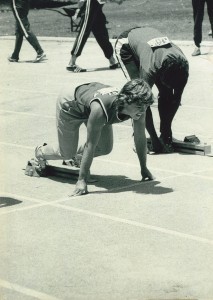
Lynda Huey, preparing for 100M race
I get in the pool right away. Quite honestly, I get in the pool no matter what kind of injury I have. It lets me move, it lifts my spirits, and it lets me work out new protocols for our patients. So here it is: the protocol I created today in the pool for my own hamstring muscles. It’s not for an Olympic sprinter. It’s for a Baby Boomer who wants to keep going to the UCLA track to enjoy running with her running partner of the past 20 years.
Rule #1. Don’t stretch it! Leave it alone for the first week or two. Just do what you can do in terms of movement, but stop testing it out. Remember when you were a kid and they’d tell you, “Don’t pick at it?” Well, same thing here. Leave it alone and let it get some healing time first.
Rule #2. Ease into every movement very slowly. Sudden moves are what will re-injure the hamstring, so start very slowly and if everything feels fine, begin to gradually (very gradually) pick up speed. With hamstrings, you’re trying to “get away with it.” You’re trying to sneak some work into them without them complaining, doing it in the water is the easiest way.
Put on a flotation belt and get into some deep water. Since I wanted as much control as possible of my movements, I chose to put on a tether and stay in one place in the pool instead of move around. I started slowly with Deep-Water Running.
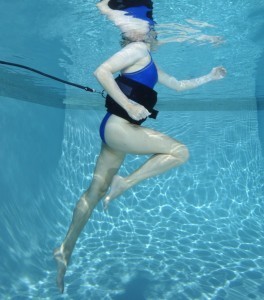
Deep-Water Running
This technique does only the back half of the running motion, so it doesn’t put the same kind of stress on the hamstrings that running on land does where the lower leg and foot reach forward. Still, I started cautiously, even though I’ve helped many Olympic sprinters, jumpers, and hurdlers through their hamstring strains successfully. I’m always cautious at first. Find out slowly what does and doesn’t hurt and choose the exercises accordingly.
It felt good! So I kept doing it, gradually increasing the speed up to a strong moderate pace that I could hold for five minutes. By then all discomfort in the muscle was gone, so I was a bit emboldened. I started a Power Walk very slowly, actually expecting it to hurt and have to stop.
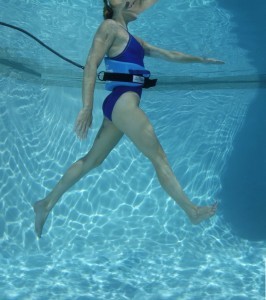
Power Walk
But it didn’t hurt. I gradually went from super slow to a more comfortable, relaxed pace. I kept my knees slightly bent in case that forward reach with my right leg would aggravate the right hamstring. It did not. I kept going with Power Walk for five minutes.
Normally, I mix up the Deep-Water Interval techniques every 30 seconds or every minute, but when dealing with an injury, I’ve learned not to switch the movements so quickly since sudden changes can hurt more.
Next I tried out Speed Walk to see if I could even do it.
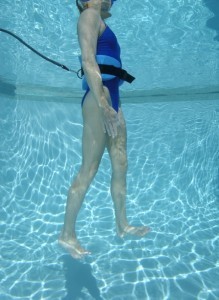
Speed Walk
At first I felt vulnerability in that hamstring, but then I tightened up the form – abs pulled in tight, butt muscles as tight as possible, knees absolutely straight so the hamstrings wouldn’t be working but all the work would go to the gluts. It worked, and I felt solid and strong doing Speed Walk. Three minutes of that was enough.
In a pool therapy session stretching is what comes next and I cautiously placed my foot on the wall to see if I assume the hamstring stretch position without pain. I almost could. My knee was slightly bent to protect the hamstring and all was well. But then when I tried to sway from side to side as I usually enjoy doing to stretch the inner and outer edges of the upper hamstrings, my leg yelled “STOP!” I had violated my own rule of not testing a strained hamstring. It had been only six days since the injury and that wasn’t long enough.
Rule #3. Go back to what was feeling good just before you hurt it. That’s a rule of rehab that I’ve learned over and over so many times. I did another three minutes of Deep-Water Running, three minutes of Power Walk, and one minute of Speed Walk. Whew, it was feeling better again.
Rule #4. Skip any movement or exercise that hurts. Simply that. If it hurts, don’t do it.
Next came the Kicking Series, and just the thought of doing most of them didn’t feel right. I did a half-hearted, slow back flutter kick, an equally slow bicycle then gave up on kicking.
Rule #5. Don’t step over the “Red Line.” For me, the Red Line is where the range of motion feels OK and then suddenly it doesn’t feel OK anymore when you move just a fraction beyond that. Every injury will start with a Red Line that’s pretty rigid and narrow. Then each day the Red Line will retreat just a little allowing for fuller, wider movement. I had stepped over my Red Line doing that stretch, so I needed to be careful not to do that during the rest of the water healing workout.
Down to the shallow end of the pool for the basic exercises that have seen me through thick and thin of ankle sprains, shoulder pain, back bruises from landing on a curb, and you name it – I’ve probably done it to myself and needed these exercises to get me through it. Lunges, Squat Jumps, Side Straddles, Front Straddles, V-Kicks, Double Heel Lifts, Leg Swings, and Front Kicks. Some felt better than others. I skipped any that didn’t feel right and I bent my right knee to take the strain off that hamstring on many. I tried running in chest-deep water, but when my foot hit the bottom of the pool it drove forces up the back of my thigh straight to the sore spot in the belly of the hamstring muscle. So I put on my float belt and did one more Deep-Water Running sequence. No forces, and the echo of pain receded.
Rule #6. Better to quit early than do one too many. One too many of anything. That was enough for the day. Except ice, of course. I’ll be icing off and on this evening, and will get back in the pool again tomorrow. From experience, I should be able to add an exercise or two with each day until I return to full fuction. That’s the long-range plan. For tomorrow, I won’t stretch the hamstring and I’ll expect the Red Line to be a little bit further away than it was today.
Lynda Huey, M.S., founder of CompletePT and Huey’s Athletic Network, is a former athlete and coach whose own injuries led her into the water to find fitness and healing. She was educated at San Jose State University where she starred on the track and field team during its golden years. Lynda is the author of four books on water exercise and water rehabilitation.
July 12, 2013
When You Can’t Run on Land
When you can’t run on land, you CAN run in the water. And you, like hundreds of skeptical world-class athletes before you, will change your mind about the pool being for sissies once you feel the power of water. Here are a few of the top runners who have benefited from my program:
Mary Decker Slaney was America’s premier middle-distance runner in the 1980s. Often injured, she took to the pool for deep-water interval training for a month. Her first day back on the track, she set an American record for 2,000 metres.
One day in 2002, our pool was filled with former and future Olympic track athletes. Carl Lewis, owner of multiple gold medals for sprints, jumped in the pool with us to feel for himself what he’d been hearing about for years. He knew he’d gotten his day’s workout without going to the track.
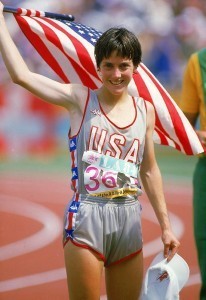
Marathoner Joan Benoit had arthroscopic knee surgery only a few months before the Los Angeles Olympic Games. She came to our pool and did deep-water interval training with Jacqueline Hansen, the former world record-holder in the event. Joan stayed in world-class shape and won the first-ever women’s Olympic marathon gold medal.
Valerie Brisco won three gold medals at the Los Angeles Olympic Games (200M, 400M, 4 x 400M relay). She won a bronze medal in Seoul in the 400 and silver in the 4 x 400M relay. Whenever she was slightly injured, coach Bobby Kersee sent her to me to the pool for a few weeks. She returned to the track without losing a step.
Doing pool workouts develops cardiovascular fitness, increased flexibility, improved balance and coordination, and best of all, a sense of well-being. It doesn’t matter if you’re in the middle of winter in England, the middle of summer in Australia, or somewhere in-between in America. You have the same weather protection when going to an indoor pool as going to the gym. So forget the season and jump in.
But where do you find water? Some of you may have pools in your backyard or in your building. But most of you will have to search for a pool for your workout. Nearly every community these days has a public pool that can be used for a small fee. Find one near your home or work where the hours fit your schedule so you can easily go there when you sense you need to rest sore or tired joints or muscles.
A Gear Checklist
You’ll need a bathing suit. There are many new styles of suits these days, down to the elbows and knees if that makes you more comfortable going to a public pool.
You’ve already located your pool of choice, and depending upon the water temperature of that pool and how warm you like to be, you might opt for a fleece rash guard or a neoprene zip-up shirt to keep you warm. (www.completept.com/pages/equip-w.html).
If you have tender feet, you can wear pool shoes. There are many inexpensive brands and generics available.
You will also need a flotation belt to keep you upright in deep water. Don’t try to do your deep-water running without such a belt – you’ll not be able to maintain good running form, because you’ll be making extraneous stay-afloat movements. If you’re an elite runner with little body fat, you’re probably a “sinker” and you will need the new CompletePT belt, formerly the Hydro-Tone most buoyant of all belts.
Ready to go? Strap on a flotation belt (www.completept.com/pages/equip-w.html) and move to the deep end of the pool. When your feet aren’t touching the bottom, you’re deep enough. You’ll do the following three deep-water techniques to increase cardiovascular fitness, muscle strength, flexibility, and coordination. Alternating between these three movements lets you add variety to what would otherwise be incredibly boring if all you did was run.
DEEP-WATER RUNNING
In deep water, we only do the back half of the running motion; that is, there’s no forward reach with the foreleg and foot. In fact, if you can see your feet you’re not running correctly. Lift one knee while you drive the other foot down and back.
Find a focal point straight ahead and hold your eyes on it as you begin running in an upright position. Use the same motion of good running form on land. If you don’t think you have good running form, this would be a good time to work on it with another runner who can view your arm and leg action. Keep your head and chest erect and your shoulders relaxed and down. If you aren’t tethered, the tendency will be to lean forward and try to reach the other side of the pool. The point isn’t to travel anywhere but to focus on turnover rate and simulating your usual effort level during a run. So keep your chest lifted as you run or get a tether to help with good form.
WATER WALKING
Start by establishing an “opposition position,” right arm and left leg forward at the same time. Begin walking, swinging your straight arms and legs forward and backward. Some people compare this to a cross-country skiing motion. Visually check your elbow and knees. Many people think their arms and legs are straight when they are not. These long levers of straight arms and legs create great resistance for a workout and force you to improve your core strength and body alignment.
FLIES
Flies are similar to jumping jacks. Start with your hands together in front of you and your feet together below. Pull your hands and feet open wide, then bring them back together again. Continue opening and closing your arms and legs. Keep your hands facing down, sliding just beneath the surface of the water. It’s easiest to learn this if you lean slightly backward at first.
Do 2-3 minutes of Running, then 2 minutes of Walking, then 1 minute of Flies. You should be warmed up by then. Spend most of your time running – you’re a runner and that’s what you came here to do. But whenever you feel yourself losing interest, switch to Walking and Flies to regain your focus then go back to running at a faster pace. That will keep you on track!
Be Sure to Follow These Basic Principles
Start running slowly until you’re warmed up. Depending on your pool’s water temperature, that may take 1-5 minutes. Gradually increase your speed as you warm up.
Ask a coach to help you with good form. In water, you’ll feel yourself pulled off balance if your arms swing to the side, so here’s a chance for you to improve your running form. Good form lets you slice through the water without sideways movements. Someone giving you cues as you run will help you attain good form.
Visualize yourself running over your favorite course. Pick up speed as you mentally turn that corner and start down the slight hill. Mentally put your favorite running partner beside you.
Consider adding speed-play to your pool workout. Vary your speed throughout the session to increase your heart rate. Run fast, recover, and then push yourself to run fast again. Try 2 minutes at a moderate pace, 1 minute higher intensity then alternate between 2 minutes moderate and 1 minute fast until you feel your typical level of fatigue.
Your running workouts will be based on time rather than distance. For example, if you were planning a moderate five-mile run at 8-minute pace, that equates to forty minutes of running in the pool. Toss in some Walking and Flies occasionally for variety. After your warm-up (see #2), you can begin interval training if that’s what’s right for you. If you wanted to do some repeat 1/2 mile runs, simulate the effort level and cadence of doing that on land. If you wanted to do 5 x 200 Meters, sprint in chest-deep water for a nice round 30 seconds. Jog on place to recover, then repeat until you’ve done five.
Stretch for your warm down. Put your foot on the side of the pool and hold the deck to stretch one hamstring, then the other. Move to shallow water, hold the side of the pool and grasp your ankle to stretch your quads. Do other stretches of your choosing that feel good to you at the end of your workout.
Make it FUN! Remember how much fun it was to play in a pool when you were a kid? It can still be lots of fun – and enjoy the great satisfaction you feel when you get out of the water.
If you want some visual cues to learn these pool techniques you’ll find laminated pool exercise sheets, books and DVDs at completept.com/pages/equip-w.html.
Lynda Huey pioneered the use of water rehabilitation in athletics with the many members of the USA Olympic track and field team. She has water-trained some of the world’s best athletes in basketball, ice hockey, tennis, volleyball and football, as well as the Hollywood elite. Lynda has taught her water therapy techniques to thousands of coaches, therapists, and doctors, and has certified hundreds in her methods. Lynda’s books and practices are considered the foundation of aquatic physical therapy world-wide. She owns and operates CompletePT, two pool and land physical therapy clinics in Los Angeles that treat over 630 patients each week. For more information visit www.completept.com
June 19, 2013
Common Golf Injuries
You’re outdoors at dawn, the golf course looks beautiful in the sunrise and the grass smells great, but pain distracts you. Here are some helpful quick fixes for while you’re on the links.
Back Pain:
Bend your knees when retrieving your ball
Considering using a putter with a longer shaft
Slow down the backswing to reduce rotational stress on the lower back
Don’t hyperextend your spine on the follow-through
Don’t place your feet too far apart as you address the ball
Crouch into a squat and round your back as much as possible for a stretch
Knee Pain:
Consider switching to spikeless shoes to reduce twisting forces on the knees
When recovering from knee injury or surgery, place with short irons to minimize stress on the knees
Don’t return to full swinging prematurely after injury or surgery – start slowly and work into the game gradually to prevent re-injury.
Wear a knee brace during the game or practice session
Ice after playing
Golfer’s Elbow:
Ease grip pressure and loosen both elbows during the swing
Bring the club back slowly during the backswing
Avoid contact with rocks, sprinkler, or tree roots
Tee-up the ball on fairway shots to prevent divots
Don’t decelerate the club before impact with the ball
Ice your elbow before and after play
Shoulder Pain:
Learn some basic shoulder stretches to do before every game or practice session
Slow the backswing to reduce stress on the shoulders
Maintain strength and flexibility of both shoulders
Sweep the ball off the turf to reduce the chance of impact from divots
If you have even minor shoulder pain ice before and after play
Some injuries are stubborn enough that you must seek further help. Physical therapy can provide a “jump start” to healing all of the above conditions. CompletePT provides physical therapy with licensed physical therapists in Los Angeles, CA.
Our 92-degree, salt-water pool is a restorative environment for sore shoulders, backs, elbows, and knees. Running and walking in deep water helps maintain fitness while knee, foot, hip, or back injuries heal. Physical therapy exercises to challenge core muscles improve the long-term outcome of back injuries. Specific resistance exercises against the water simulate the golf swing, allowing for maintenance of skill and technique while increasing the strength of the exact muscles needed for that movement. Skilled soft tissue mobilization can relieve the tension in muscles and tendons, especially effective with shoulders and elbows.
Matt Smith golfed at Loyola Marymount University. He tore his labrum while also damaging his rotator cuff muscles. While much of his therapy was skilled manual therapy by his licensed physical therapists, he also enjoyed getting in the warm water. Matt said, “I was able to do a bigger range of motion because there’s no gravity in the water. I could mimic the swing. We kept it under the water as long as I could, so I swung only up to shoulder height at first. I could feel the resistance as I shifted my weight and the rotation strengthened my core muscles, especially the obliques that make that movement. By replicating my swing in the safe environment of water, I was able to maintain the coordinated movement of the body working as one well-connected unit. As I healed, I began doing the full swing, both above and below the water.”
“Both pool and land therapy really helped in terms of getting my swing back,” said Matt. I did balancing exercises, I used the Body Blade (therapy equipment), and swung a long plastic pipe to regain the connection between the body parts working as a unit during the swing. I did lunges with a twist, which helped with spine mobility. I would hang from a pull-up bar while the PTs applied pressure from behind to cause a return of my back extension.”
Lynda Huey, M.S., founder of CompletePT and Huey’s Athletic Network, is a former athlete and coach whose own injuries led her into the water to find fitness and healing. She was educated at San Jose State University where she starred on the track and field team during its golden years. Lynda is the author of four books on water exercise and water rehabilitation.
May 16, 2013
Bone Cancer – Pool Therapy Helps!
Alex Bey was diagnosed with bone cancer in June of 2012. He said, “I was given radiation treatments and surgery on my hip bone and thigh. I was in constant pain and living on pain killers as I felt the muscles in my legs and arms and losing their strength.”
His doctor referred him to our pool program inside the Jodie Foster Aquatic Pavilion where he saw the Clinical Director, Ashley White, DPT. Ashley checked with Alex’s doctor to see if there was anything specific she should know prior to beginning treatment. Besides that information, Ashley’s main focus for treatment of any patients with cancer revolves around the type and stage of cancer they have, the cancer treatment they’ve received so far, and their endurance, strength, and fitness level.
“The pool is an incredible tool, because I know how safe the environment is and how gentle it can be on the body, especially if the patient is quite fragile when they come to us,” said licensed physical therapist Ashley White. “I start all cancer patients in the water. Some will progress to land therapy, but some will do their entire plan of care in the pool.”
Alex got started with our pool program and gradually made progress. He said, “Since I’ve started with my water therapy I feel like I’ve taken a positive turn and my body and most importantly my mind is in a much better place. I no longer fear my cancer and know I will beat this, just due to the fact the therapy has changed my outlook on a better, healthier life.”
At CompletePT Pool & Land Physical Therapy, we are aware of key information to keep in mind when treating patients of this nature. We know the blood count has to be high enough that the doctor can authorize exercise. We don’t want to put too much stress on the bones where they could possibly get hurt or break a bone. Thus deep-water exercise where there is no weight on the weight-bearing bones is ideal. If patients have problems with balance or numbness in the feet, they wear pool shoes to prevent scrapes or cuts on the feet that could possibly lead to infection. And the staff watches for swollen ankles or extreme shortness of breath while doing a small amount of exertion or when at rest.
“I love to see a patient like Alex improve the quality of his life,” said Ashley. He went into the water and felt his muscles working again, getting strong as he became more mobile and his pain decreased. It’s an amazing thing! He was doing something for himself that helped him physically, mentally, and emotionally reclaim his body.”
Alex summed up his experience: “I would recommend this program to anyone, it is definitely a WINNER.”
Some other benefits of physical therapy for cancer patients are:
Better balance, lower risk of falls and broken bones
Keep muscles from wasting due to inactivity
Lessen the risk of osteoporosis (weak bones that are more likely to break especially with bone cancer)
Improve blood flow to the legs and lower the risk of blood clots
Become less dependent on others for help with normal activities of daily living
Improve self-esteem
Lower the risk of being anxious and depressed
Improve the ability to keep social contact
Improve endurance while decreasing fatigue
Lynda Huey, M.S., founder of CompletePT and Huey’s Athletic Network, is a former athlete and coach whose own injuries led her into the water to find fitness and healing. She was educated at San Jose State University where she starred on the track and field team during its golden years. Lynda is the author of four books on water exercise and water rehabilitation.
April 5, 2013
Recovery from Stroke: Back on His Feet!
Ken Haker had retired as Assistant Principal at Paul Revere Middle School for a little over a year. One Saturday morning, he woke up with a headache. He never got headaches, but this one got worse. His family was at a Boy Scout outing, so he called 911. He had a massive bleed in his brain, which doctors couldn’t find. It corrected itself and they never found the source.
Ken’s wife Gerry said, “Ken is diabetic and he was put on blood thinners. I wondered whether either of those were the cause of the stroke.
For five weeks Ken was in Intensive Care with blood dripping from his brain. He was in a coma for several days. The prognosis did not look good at that point. In total, he was in the hospital for seven weeks. At the six-week mark, he had a crisis – the small capillaries shut down. To keep them open, doctors had to get his blood pressure up high, and he made it through that well. “He had machines and tubes everywhere, like in a horror movie,” Gerry said.
After the neurological event was past, he was transferred to a rehab center for one hundred days. He got bed sores and had pneumonia. His right arm hung down, dislocated, and the staff seemed to write him off, saying therapy wouldn’t do him much good. He got ten minutes of passive movement from the therapists each day.
When Ken went home, in-home physical and occupational therapists came to him. “The OT was great,” Gerry said. “They worked on getting him to use his arm. We became encouraged. This was almost the one-year mark.”
Ken went to Good Samaritan Hospital for a two-week intensive program with the goal of getting off a feeding tube and becoming able to eat again. Two weeks later, his swallowing was weak, but he could eat soft food without the tube. Gerry said, “they also taught us how to transfer him from his wheelchair into a car so that we didn’t have to rely on transportation services. That was huge!”
In the middle of 2011, he started at a Physical Therapy clinic specializing in neurological cases where he became able to sit and stand with more control and was introduced to a walker. Finally he was progressing. Then came a fall in which he broke his femur (thigh bone) and several months later he fell off the bed and tore his rotator cuff and experienced a tear inside his ear that required four stitches. The two falls made him afraid of falling again.
The Haker’s dry cleaner told Ken’s wife Gerry about CompletePT. When he started in May, 2012, he was using the pool’s hydraulic lift to enter the 92-degree, salt-water pool. He felt safe in the warm water. “It’s scary for him to walk on land,” said Gerry. Here, if he falls, it’s just into the water. He likes how relaxing it is. And he likes his physical therapist, Eli English, DPT, who’s really good with him. Eli lets him practice walking without the walker, which he couldn’t do on land for safety issues. He’s standing up straight, lifting his right leg, and pushing his hips forward. Ken’s balance and confidence have greatly improved.”
He has made slow but steady progress. His overall strength has improved and his posture is getting better. Today, Ken enters the pool using the steps with the assistance of his licensed Physical Therapist. He maintains his land therapy three days a week and is in our warm pool two days a week.
Lynda Huey, M.S., founder of CompletePT and Huey’s Athletic Network, is a former athlete and coach whose own injuries led her into the water to find fitness and healing. She was educated at San Jose State University where she starred on the track and field team during its golden years. Lynda is the author of four books on water exercise and water rehabilitation.
February 8, 2013
Black (Sports) History Month
Here’s some black sports history for you from a white woman who lived deeply entrenched inside the black sports world for over thirty years. I had the female athlete’s view from the competitive level plus I had a unique view from above, being Wilt Chamberlain’s long-time companion until his death in 1999.
I was given my first lesson in “Negro” history in 1966 by Olympic gold medalist Tommie Smith and his roommate S.T. Saffold, the star player on our San Jose State basketball team. Together they pulled out their Encyclopedia of American Negro History and read to me of lynchings and other horrors to make sure this white college girl in California didn’t underestimate the wrath of white America’s reaction to my involvement with black people.
Sure enough, my all-white former high school friends were shocked, shook their heads, and some even withdrew from me totally. My father freaked and my mother turned silent, causing me to keep my life in the black sports world a secret second life separate from them.
All through my years at San Jose State, I trained alongside some of the world’s fastest sprinters. In fact, Track & Field News, called this unusual gathering “Speed City.” Bud Winter, a former Olympic coach, was our coach. While track coaches Vern Wolfe at USC and Jim Bush at UCLA wouldn’t allow women on the track while the men trained, Bud welcomed my eager desire to learn world-class sprint techniques. After the novelty wore off, the men accepted me and they gave me a head start to every sprint we did in practice, only to fly by me before the finish line. This was a time before there were any black faces on television, so learning black language on the track was thrilling.
Black athletes had trouble getting landlords to rent to them in San Jose in 1968, so I rented an apartment and turned the key over to two of my male teammates.
Watching Tommie push his black-gloved fist into the air on the victory stand at the 1968 Olympic Games was also thrilling. I watched that moment with the other sprinters from the track. As happy as we were about Tommie big gesture, that’s how unhappy all other white people were around me. “That was the wrong place,” or “that was disgusting,” were the comments I heard. These days it’s fashionable to admire Tommie for his courage, for providing a turning point in the history of black sports. But at that time, I had no other white friends to discuss it with. When Tommie took his stand, there was not a single black head coach in any sport in the college or professional ranks. All of that began changing slowly in the 1970s, slowly in the 1980s and 90s, then suddenly in this century.
The best wide receiver at San Jose State was named Calvin, who was black. Eric, who was his back up, was white. There were times that the coaches took Calvin out of the game and we had to watch Eric drop the ball. When I asked Calvin what that was about, he told me they could only put five black players on the field at a time. So if one went in, one had to come out. This was the first I heard of a quota system in football.
I met Wilt in Houston for a week-end and watched his Lakers play the Rockets in the Astrodome. I could have used a pair of binoculars – the tiny wooden court was so far away. I asked Wilt about a particular switch of players at one point in the game. He told me there always had to be two white players on the court. Ok, so there was a quota system in basketball, too.
My first coaching job was at Federal City College in Northwest Washington, D.C. I was the only white person there, student or instructor. I had thought it would be a lot like being in the sports world, but these were illiterate people in a two-year inner-city junior college. Drugs, violence, and absenteeism were rampant. Even the teachers who had come through the same school system didn’t show up for class very often! It was a shock, but I was determined to make it through the school year.
We had a pool and some space that was almost a gym, but we had no outdoor fields, so we were bussed over to the mall to play field hockey on courts right next to the reflecting pool and the George Washington Monument. When spring came, we were bussed over to the Georgetown University track. Whenever I started with a new group that was coed, I would bring along a football. We got to the track the first day and the guys didn’t want to listen to a white girl who wasn’t much older than them. I picked up the football, pointed to the biggest, most athletic-looking guy there and said, “You! Run a post pattern,” and pointed downfield. He frowned, pursed his lips, and made faces of disbelief with his friend. But he ran. I threw a perfect spiral 30 yards down the field right into his hands. From then on, I could coach.
In 1973, Tommie Smith and I were coaching together at Oberlin College, which proudly stated it had admitted the first two black male students in 1835. When I first got to town, I rented an apartment. Before I moved in, Tommie came with me to see my new place. The elderly white landlord took one look at Tommie walking beside me and took back my key. She said it was a mistake – she had forgotten that it was already rented. We realized that Oberlin may have made a progressive move in 1835, but it was still very racist 140 years later.
The summer of 1974, the NFL Players Association was on strike, and the Redskins were training on the Georgetown track, my home track when I was in D.C. I worked out with receivers Frank Grant, Roy Jefferson, defensive back Mike Bass, offensive guard George Starke, and quarterback Sonny Jurgenson.
In 1975, I was wrapping up the writing of my autobiography, A Running Start: An Athlete, A Woman. I stayed at a friend’s house in Georgetown. His family was on vacation, so he gave me the key. After an evening out dancing in Georgetown, I invited Frank and George back to the house. The next day my friend who was in San Diego called me to say that his parents had gotten complaints about black men going into their house and I was going to have to leave.
“When we’re Redskins, they treat us like folk heroes,” George said. “But we were just black men that night as they looked out their windows.”
The first-ever World Athletic Championships were happening in Helsinki, Finland in August, 1983. I was filing stories as a freelance sports journalist for National Public Radio. Wiltie met me there and as we sat in the stands, all the black faces except Wilt’s were on the track, and all the white faces were in the stands. I’m almost obsured sitting to Wilt’s left.
As the Los Angeles Olympic Games were unfolding, my writing mentor, Zan Knudson, suggested we write a book about the new water exercise program I had developed. She thought up the name of Waterpower Workout. We hired the black photographer I’d met when I was coaching at Los Angeles City College. We needed over a hundred photos for the book and decided to use my athlete friends. We asked Wilt Chamberlain, Olympic sprinter Evelyn Ashford, Olympic 800 meter runner Kim Gallagher, and NFL tight end Bernie Casey, among others.
We were both very proud of the fact that this was the first exercise book in America that used black models.
In 1986, I coached a young UCLA 400 meter runner in the pool while his injury healed. It amazed me that he didn’t know who Tommie Smith was, that he had never heard of the quota system for sports teams, but that he had heard of Bud Winter, our coach at San Jose State. He quizzed me on what it was like having Bud as my coach. Besides the coaching techniques that I shared with him, I found it really interesting that I was teaching this young black man his own black history. He simply didn’t know it.
A mudslide in Bormio, Italy would have gone unnoticed to me if friends in Lake Como hadn’t invited Wiltie and me to attend their fund-raiser, an Italian sports awards gala on New Year’s Eve, 1989. I had met Italy’s best 100M sprinter, but all the rest of the athletes were unknown to me. When the guest of honor, Wilt, took the stage, I watched how he raised one arm over head to acknowledge the uproar. He had the grace of a superstar long accustomed to the glare of the spotlight, while the others had blinked and acted shy.
There were no other black folks at the event, something that never fazed Wiltie. Since he had grown 7 feet tall at age 14, the white world had come calling and given him special exemption from most of racisms deprivations. He understood that and we talked about it on the flight home – but not until after he beat tenor Luciano Pavarotti at cards as they sat across the aisle from each other in first class.
Lynda Huey, M.S., founder of CompletePT and Huey’s Athletic Network, is a former athlete and coach whose own injuries led her into the water to find fitness and healing. She was educated at San Jose State University where she starred on the track and field team during its golden years. Lynda is the author of four books on water exercise and water rehabilitation.
January 22, 2013
Success Story: Ruptured Achilles Tendon
Patients who do well in our care at CompletePT often like to share their stories. This one is about Alan Blumenfeld who caught his foot between two steps, fell, and ruptured his right Achilles tendon. When he came to CompletePT after the surgical repair, he had decreased strength and range of motion in his right ankle. He had gait abnormalities, and although he was able to walk and to go up and down stairs, he couldn’t yet return to his prior workout schedule. He was concerned, because he had a stage play opening soon and needed to be able to move well.
Normally this is the kind of weight-bearing injury that would go straight into our salt-water pool, but Alan had a rash and some sores on his skin, so his treatment started on land. By the time the skin cleared up, he was working on high-level land activities and his primary licensed physical therapist, Jessica Bufete, DPT, was delving deeply into manual work on his ankle. Alan was one of the patients treated strictly on land, even though most people think “pool” when they think of CompletePT.
Jessica’s treatments focused on improving the activation and strength of his plantar-flexors and gait training for a better heal-toe pattern and push-off. Her skilled hands-on work improved the mobility of his ankle joint and loosened soft tissue restrictions, which allowed for more comfort when walking. He became able to perform a single-leg stances on a foam pad as his ankle stability improved. In his last phase of rehab, Alan completed walking lunges on our new rubberized track and jogged on a mini-trampoline.
Alan had this to say about his rehabilitation: “I had surgery to repair my Achilles tendon. I was very worried about recovering my strength and ability. The extraordinary professionalism and commitment from all of the therapists at Complete PT made the process remarkably simple and I was able to regain my strength, stamina, range of motion and ability. I had to, and still must, exercise on my own. But, with Jessica’s instruction, attention and care I have recovered more quickly than I thought possible.”
Because we see 500 to 600 patient visits a week, it’s easy to get used to success stories such as this one. That’s why we like to stop, think about how we improved the quality of Alan’s life, and savor the job satisfaction we have.
Lynda Huey, M.S., founder of CompletePT and Huey’s Athletic Network, is a former athlete and coach whose own injuries led her into the water to find fitness and healing. She was educated at San Jose State University where she starred on the track and field team during its golden years. Lynda is the author of four books on water exercise and water rehabilitation.
September 20, 2012
Biking from San Fran to Santa Monica!
The Arthritis Foundation met with me and James Cowan, CompletePT’s Director of Finance and Marketing, in the middle of July, 2012. They wanted us to join them in raising money for their programs through their largest fundraiser of the year – an 8-day, 525 bike ride down the California coastline. They always have a Medical Honoree and a Corporate Honoree for this event, but this year, they asked me to be their first-ever Rehab Honoree.
We joined in to help. James, an avid mountain biker, said he would ride the last day from Ventura to Santa Monica. He asked a friend to borrow his bike. When the friend wanted to know why, James sent him the link to the event, and before you know it there were two bicyclists on CompletePT team. They saw there was a 2-day option on the ride, so decided to sign up for that.
Then came the first gathering of cyclists a few weeks later and they caught the “coastal bug” from the other riders doing the whole event. James and Marc Karamanoogian were now doing the full 8 day ride! Here’s James’ remarkable journal from that event.
Day 1: Santa Cruz
An amazing day, about 90 miles. We left San Francisco at 8am, rode for close to 5 hours. The most unbelievable backdrop with perfect weather.
As we entered the camp, there were cheers and a rewarding horn (Polynesian Pu) being blown for each successful rider. The horn continued to welcome in our group for many hours. Oh! the comfort of knowing you’re not last!
Thanks to all of you for your support, that’s what makes it possible. Xxxx
Day 2: Monterey
Sleeping was so so, I now know that any incline is a bad idea, my sleeping bag kept slipping down the tent.
We woke to a very damp setting, tents soaked from the cold night air. We were dry, but packing up wet tent gear in 50 degree air is not ideal. Breakfast was a full buffet, 5 sausages, 10 strips of bacon and hash potatoes gave me the boost I needed. They even had homemade bread pudding!
We set off late as a few in our group had some bike issues. It was overcast, windy (headwind) and cold. Luckily it was a short 48 miler today. My toes eventually thawed around mile 35. We meandered through strawberry fields, which provided an amazing aroma, and through the sand dunes overlooking Monterey.
We’re at camp now, drying out our gear and getting ready for a fun night.
My legs feel great 
Day 3: Big Sur
We woke to heavy mist, everything soaked. But not that cold!
I had followed a tip from a fellow rider of putting your riding gear in the sleeping bag with you to keep it dry for the morning. Unbeknownst to me my gear was not ‘matching’ Marc’s so I had to switch. Oh well, it is 9/11 and we all made an effort to sport red and white… Note my socks!
We left Monterey shrouded in fog and rolled through Pebble Beach golf courses taking too many photos. The wildlife (deer and rabbits) was stunning, the views epic and the sea air smelled fresh.
As we cruised through Carmel the sun finally showed its face. We then climbed towards Big Sur and finally let our legs stretch as we wound ourselves along the coastline at a good pace.
River Bend is a must stop at mile 46 of 48, according to the veteran riders, and so we did. It’s a tranquil river bend where you can enjoy your beer with your feet dipped in the cool water.
We’re at the camp ground now, setting up for the night, and thinking about Livia, who we rode for today.
Livia Telli, age 4, has Juvenile Idiopathic Arthritis.
Day 4: San Simeon
Last night we got a break, the sky was clear and the stars were amazing. We enjoyed a lovely dinner at the Big Sur lodge and tucked in for the night at 8.
We woke to clear skies and dry tents: woohooo!
The first turn out of the camp ground sends you up a 600 foot climb to get things going. A lot of overtaking as I let my legs start the 68 miles in full swing.
The views as we cruised along the coast are nothing short of epic. When you’re on a bike you get to see, stop, smell (anise) and share the majestic moments as they unfold. It’s breathtaking. So many miles of untouched coastline. We had 2 big climbs, although I crested the first and had to ask some poor chap doubled over in pain if that was ‘one’ of the hills- it made his day! Classic!
After the climbs we hit the checkpoint where ABBA was blaring, oh this is my kind of trip. We ate some peanut butter and jelly sandwiches and started off for the rolling 19 miles back to camp. Something snapped and I dropped my head into race position and rode faster than I probably should have, pushing all the limits. 20, 30, 40mph+ in some sections. Before I knew it the infamous Polynesian Pu horn sounded as I completed the stage and I had to reach for the brakes and call it a day. Wow, 68 miles, 5,500 feet of climbing, and a grin from ear to ear.
Tonight is wine tasting night at our San Simeon campground. Our tents are pitched, we’re showered and enjoying the ocean views.
Today we rode for Macy Coad, age 5, with Oligo-Articular Juvenile Arthritis and Uveitis. Macy is why we ride.
Day 5: Pismo Beach
Wine tasting last night was a perfect respite from our camping lifestyle. We were momentarily transported to a sophisticated gathering of cheerful characters donning real stemware. Plenty of wine from Lone Madrone, a great dinner and another early night. Ear plugs inserted by 8:30pm after a long day in the saddle results in the deepest sleep.
Using a porta-potty first thing for a number 2 in the dark is not pleasant, charity, charity, I can do this. It’s so important to have everything cleaned before a big day in the saddle too!
Breakfast was great, I’m loving my Starbucks VIA shots in my personal Vespa mug.
We hit the road early and settled into a steady pace for our 58-mile day, meandering our way along the coastline. The marine layer would not back down, and so once again we were cold. Seeing the midway checkpoint, cheering ladies, cowbells ringing and all the energy goodies you could imagine picked us up.
However, we decided to press on in search of sunshine and a minor detour to Marc’s Eureka! Burger restaurant in San Louis Obispo. 3 IPA’s, and a gourmet fig, marmalade & bacon burger provided me my first lunch in 5 days!
You’d think after lunch and the brewskis I might be fatigued. Not me! Turn it up, attack! We joined up with the pedal pushers and cut the wind like a freight train along the coastline into Pismo.
We’re setup, having beers and sharing stories from the day.
Today we rode for a rider who had a crash 5 days before we started. Laef, age 74, had been training heavily for the event and bonked (exhaustion) in his final training ride. Laef had been in critical condition and so his son Josh came to ride in his place on his fathers bike. Laef passed away last night. RIP #201, today was your day.
You are my family and friends, thank you for supporting me and this cause.
Day 6: Buellton
Today was the day. We left camp as Josh, Marc, Claudia, Jim, Robert and me. It was a little cold, but we knew 90 degrees was around the corner so no worries.
We cruised through farm country, with every farmhand cheering us on. Josh and I broke away from the pack and settled into a nice 25mph for 20 miles. Neither of us ride road (I mountain bike), so for the most part it was plain brute force that pushed us through the winding back roads. There was not one pedal stroke in there that was not for his father Laef. Josh is a wonderful person, and I’d pedal for his loss any day.
When the temperatures hit 90, I was in heaven. Sun, wine country, and open roads allowed us to stretch out the legs and feel for a brief moment like this is where we’re meant to be. Seriously, I’m not sure if the speed, stories of children who can’t find a Juvenile Arthritis Doctor, Josh’s loss, or the sheer joy of riding as team made me cry, but cry I did.
We cruised into Los Olivos, a picturesque wine country village. A local IPA (or 2), chicken salad sandwich and I was ready to tackle the “advanced climbing detour”. After a big climb, we were faced with 5 miles of a gradual decline. (I’m a downhiller). Race on, Claudia and Israel gave challenge, but inexperience prevailed. I’m not convinced it was wise to push that hard, but this is the day, this is the ride.
CompletePT Team showed up in full force tonight and provided PT for the weary. Kristy Laing, DPT, Mike Blair, MSPT, and Lindsay Fujinaka, DPT offered desperately needed advice, recommendations and moral support to the riders. Yes, I was the first customer.
150 new riders arrive tonight. This is going to get serious.
Day 7: Ventura
For most, today was the hardest day. 90 miles of hot weather riding from Santa Barbara to Ventura. 20 miles of 101 riding, which is very dangerous. The cops were there to protect us and even closed down a lane on a narrow bridge. Nonetheless, it was hairy, and hot!
We all had to leave early to complete the designated check points in a timely fashion. Claudia, Marc, Robert, Jim and I departed in the damp cold wee hours of the day.
A few mild climbs later and we were immersed in horse farms, quiet roads and a relentless sun.
Eventually we hit the 101, and that’s where our day hit a few bumps. The shoulder is littered with rubber, glass and shards of who knows what. Robert blew a tire. We fixed it up in the blazing heat, but within 30 minutes it blew again. No spare tube as Robert is running some fancy carbon rims. After waiting a while the support vehicle came by and gave us a tube. That tube lasted 30 minutes before it gave out! 3 flats in 90 degree heat. Robert got it all squared away at the next rest stop, in Santa Barbara.
Eureka! Burger just opened their latest joint in SB, so 15 of us cruised over for a gourmet burger and beer. SB is 30 miles shy of camp, so we came out of there ready to roll. Well, at least I did. I went into a tuck and stretched the legs one more time. I rolled up on Israel; luckily he was not looking to race and let me breeze on by. Without stopping I made it to camp, and for the last time setup my tent.
It’s going to be sad to say goodbye tomorrow to all the new friends I’ve made.
Day 8: Santa Monica
Home stretch!
We woke to a clear sky and a beautiful sunrise. Group photos were taken and then 250 of us started our 60 mile victory ride into Santa Monica.
The heat bore down on us, but we had a good speed going, keeping us cool.
The coast had a different day in order for us. As we came around Point Magu we were faced with a solid wall of dense fog, and his mean brother, the 30 mph headwind. Luckily my small frame was able to hunker down and drive through it. Midway through I rolled up on Josh, and together we destroyed the coast’s best efforts to push us back to San Francisco.
Back in the sun, feeling strong, and then Israel was in my sights. We rode together for a while, finally getting to race up the PCH rolling hills. Lovely.
The challenges kept on coming as we approached the finish. Any stored energy was being spent today. We raced all the way to Gladstone’s. An IPA later and it truly was a victory ride back to home camp.
Thanks for all the support, this has been an amazing journey.
I was out of town during most of the ride, but kept up with James’ progress with his tweets each day. I got home just in time to jump in with the riders at the final staging area on Ocean Ave. and San Vicente Blvd. in Santa Monica. I was totally “WOW’d” by the people and their stories of riding down from San Francisco. We all rode to the finish line and closing ceremonies at the Yahoo! Center in Santa Monica where both Dr. Klapper, the Medical Honoree, and I gave brief talks.
Lynda Huey, M.S., founder of CompletePT and Huey’s Athletic Network, is a former athlete and coach whose own injuries led her into the water to find fitness and healing. She was educated at San Jose State University where she starred on the track and field team during its golden years. Lynda is the author of four books on water exercise and water rehabilitation.



